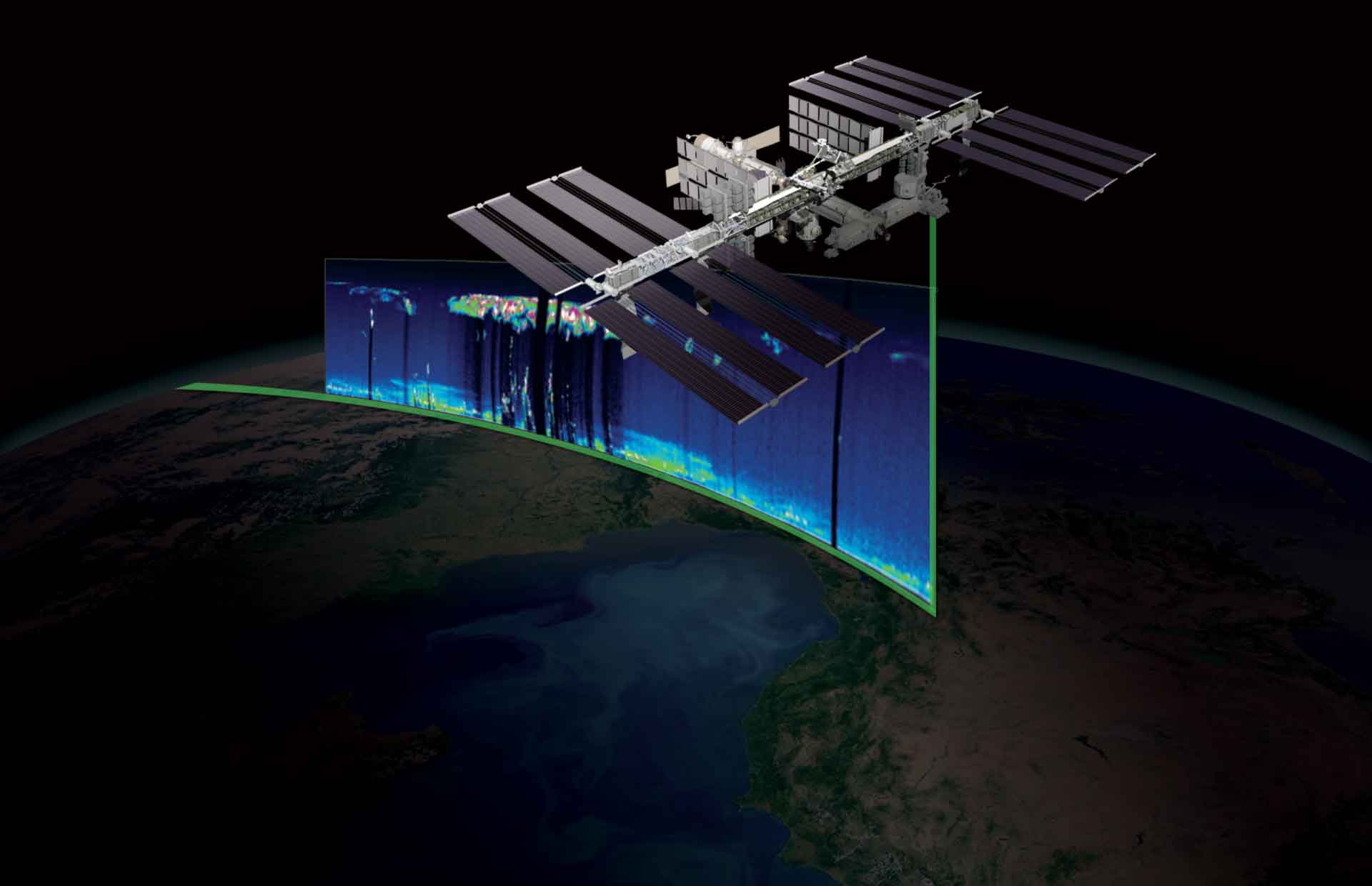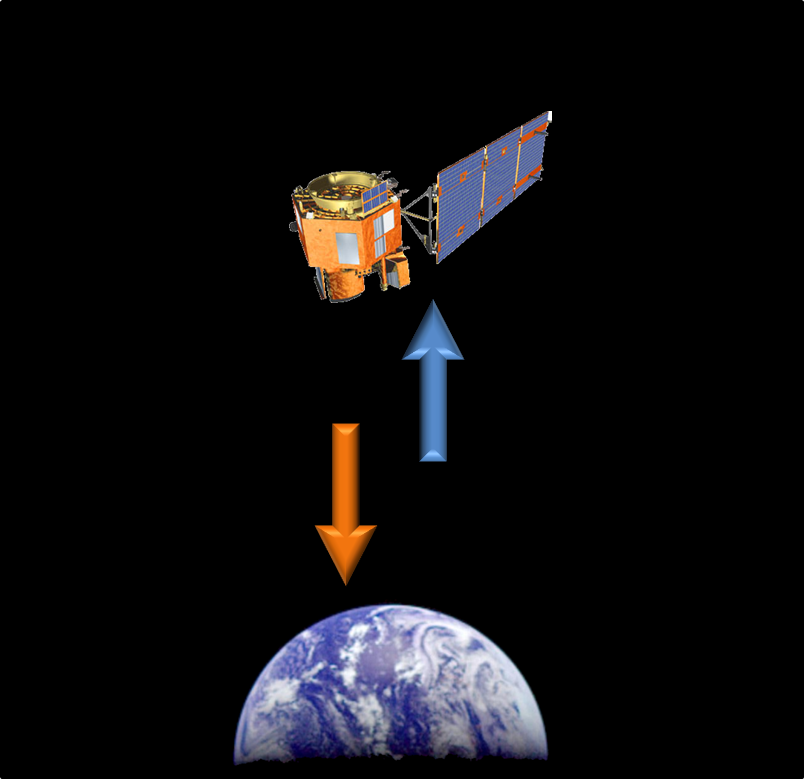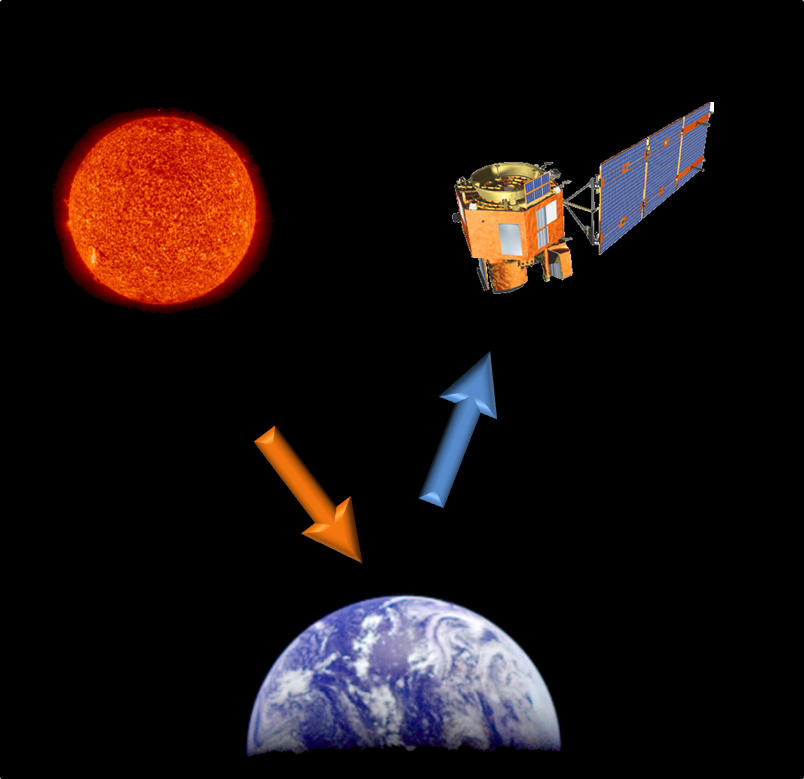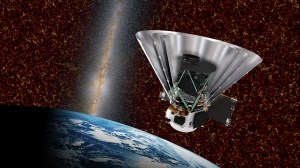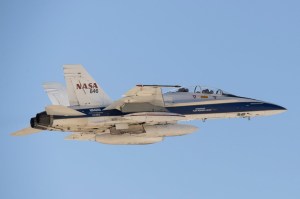Remote sensing instruments are of two primary types—active and passive. Active sensors, provide their own source of energy to illuminate the objects they observe. An active sensor emits radiation in the direction of the target to be investigated. The sensor then detects and measures the radiation that is reflected or backscattered from the target. Passive sensors, on the other hand, detect natural energy (radiation) that is emitted or reflected by the object or scene being observed. Reflected sunlight is the most common source of radiation measured by passive sensors.
Active Sensor
An active sensor is a radar instrument used for measuring signals transmitted by the sensor that were reflected, refracted or scattered by the Earth’s surface or its atmosphere. Spaceborne active sensors have a variety of applications related to meteorology and observation of the Earth’s surface and atmosphere. For example, precipitation radars measure the radar echo from rainfall to determine the rainfall rate over the Earth’s surface; and cloud profile radars measure the radar echo return from clouds to provide a three dimensional profile of cloud reflectivity over the Earth’s surface.
Spaceborne active sensors operate in the Earth Exploration-Satellite Service or in the Space Research Service. Active sensor frequency allocations are often shared with other radar systems, as such systems are normally compatible with the operation of the sensors.
Passive Sensor
A passive sensor is a microwave instrument designed to receive and to measure natural emissions produced by constituents of the Earth’s surface and its atmosphere. The power measured by passive sensors is a function of the surface composition, physical temperature, surface roughness, and other physical characteristics of the Earth. The frequency bands for passive sensor measurements are determined by fixed physical properties (molecular resonance) of the substance being measured. These frequencies do not change and information cannot be duplicated in other frequency bands.
Passive sensors are patterned after radio astronomy instruments, which detect emissions having very low power. They are particularly sensitive to accumulated radiation from a multitude of emitters on the ground, both from within the frequency band in which measurements are being made, and from out-of-band. Spaceborne passive sensors provide the ability to obtain all-weather, day and night, global observations of the Earth and its atmosphere. These spaceborne passive sensors operate in frequency bands allocated to the Earth Exploration-Satellite Service or to the Space Research Service.
























